Incognito mode is a privacy-oriented browsing feature of modern browsers. It lets you browse the web without leaving any history or cookies behind. In the past, it was only available in selected browsers. Many other browsers, such as Opera and Safari, have added this feature to their browsers. This guide will show you how to use incognito mode on your Mac.
One of the best things about Mac, next to its friendly interface, is the incognito mode for Safari. This feature is handy for those with personal and professional lives on their computers.
Also, Check out the most popular browser for MacBook.
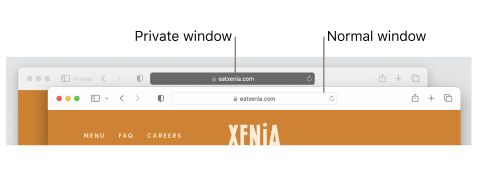
You want to avoid others seeing what you are doing at work and vice versa. The incognito mode permits you to do that without leaving any trace, such as history or cookies. The screen will display a padlock icon on the top-right if you use incognito mode.
You can use a VPN with a browser to browse more securely and privately. VPN has many advantages and works more securely than any standalone browser. Also, privacy browsers are more secure than most traditional browsers.
Although it was first introduced in 2005 by Apple Safari 2.0, Incognito mode is not a new concept. As the name suggests, it allows users to browse the internet without leaving any traces that they were ever on the page visited. With this, users can browse the web privately without worrying about anyone tracking their activity.
1. Steps to open private browser on MacBook
1 To open an incognito tab in your Mac’s version of Safari, click the Safari menu and choose “New Private Window.”
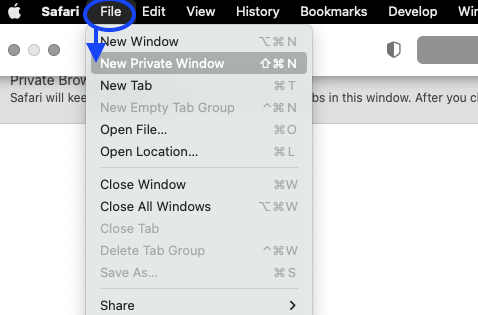
2. This will open up a new browser window with no tabs from your regular session.
3. Your browsing history and cookies will remain separate from your other windows, so you can go about your business without worrying about what others might see.
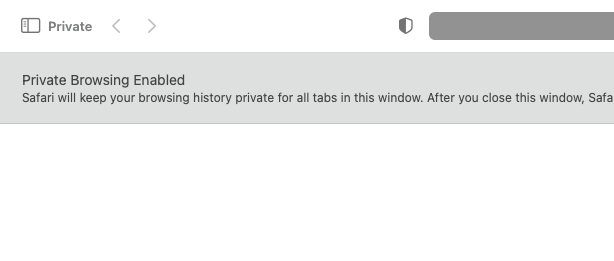
To always browse privately on safari in Mac
1 In Safari 
2. Go to > Safari opens with, select A new private windows.
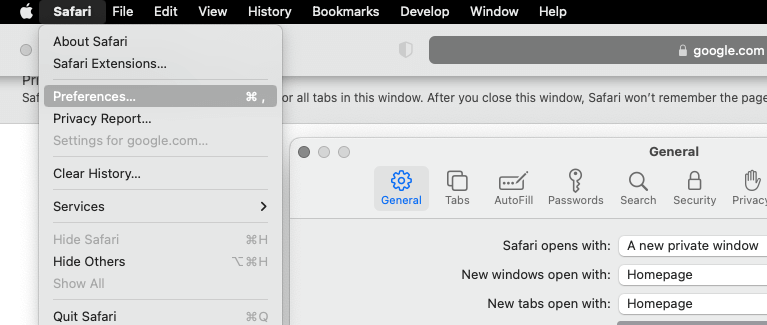
2. Steps to open private browser in Chrome on MacBook
1. Open Chrome and click the three dots line on the upper right side.
2. Click open Private windows.
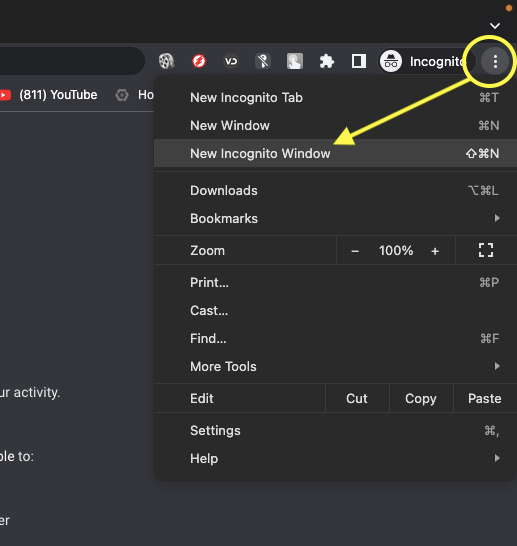
You have now enabled private browsing in chrome browser on your MacBook.
3. Steps to open Incognito window in Firefox on Mac
1. Open firefox and click three line menu on the upper right side.
2. Click open New Private window.
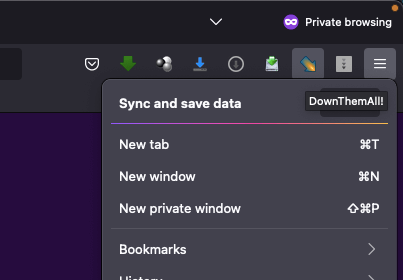
You have now enabled private browsing in firefox browser on your MacBook.
4. Open Incognito window in Opera on Mac
1. Open Opera and click file menu line on the upper left side.
2. Click open new Private window.
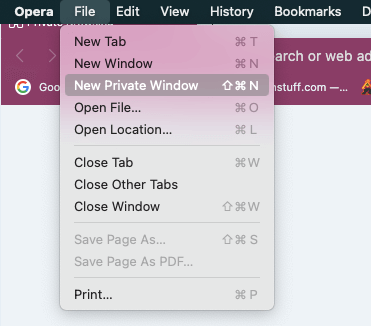
You have now enabled private browsing in Opera browser on your MacBook.
Uses of Private browsing or incognito mode
Private browsing or incognito mode is a special kind of browsing that allows you to browse the internet without leaving any traces. It doesn’t save your history, cookies, or temporary files.
However, some extensions, such as flash player, may not always work if you’re using private browsing. You can use this function to research the web and check out stores before purchasing. You can also use this to avoid distractions and keep your private life private. If you’re using a public computer, you’ll want to use private browsing so that others can’t see your history and other things you’ve been up to.
Even if you’re doing the most innocent online activity possible (like reading a news article), you should be using private browsing mode. Here’s why:
- It keeps your search history from being recorded by any sites you visit
- It prevents websites from recording your behavior on their site (e.g., whether or not you filled out a form).
- And it keeps your internet service provider from seeing which locations you visited and how long you were there.
Is Private Browsing in Modern Web Browsers Really Private?
We’re all familiar with private browsing modes in web browsers: they’re often referred to as “incognito” or “secret” modes and are typically indicated by a different color scheme. These modes allow you to browse without leaving any trace of your activity on your computer, so everything from cookies to search history is kept separate from the rest of your browser tabs.
Private browsing is handy for people who want to keep their browsing habits personal—for instance if you’re going to look up sensitive information like your salary or tax return on your browser but don’t want any record of that activity. It’s also helpful for purchasing things online: you can perform price checks and compare products without remembering those sites when you return later. Most modern browsers have private browsing modes as a default feature that’s turned on whenever you open a new tab or window, so if it seems like it’s always there when you need it, that’s because it is.
But here’s the thing: that doesn’t mean this mode keeps everything completely secret. Private browsing isn’t personal—the data is still being stored somewhere in your browser, and there are ways to dig it up even after you’ve closed the window.
Cookies are used so that if you return to a site later, it will remember essential details about what you’ve done before—like website preferences and shopping cart contents. If logged in to an account, it might even remember your name and password.
But not all cookies are created equal—advertisers use some, and others can collect data about your computer and its location. These cookies can be used to track you around the web, sometimes through third-party websites that have no relationship with the site where they were initially set. Even sites that don’t use cookies can place cookies on your browser via third parties—some may even be tracking your location if your computer can share such information!
Is private browsing private? Well, in most cases, the answer is no. The Rutgers University student and computer science researcher Abu Awal Md Shoeb has found that every modern browser leaves some evidence of user activity in its temporary files, cookies, and browser’s file system, even when that activity happens in private browsing mode.
The web browser doesn’t save your browsing history or cache pages when you enter private mode. However, it saves a lot of other information related to your activity that could be used to blackmail you or track your activities.
>> How to Change Default Browser on Mac and You can also change the default search engine on your Safari browser from bing, google and duckduckgo to others.
The amount of privacy varies based on browser. The more popular browsers like Chrome and Firefox are more likely to leave some traceable information than more secure browsers like Tor and Vivaldi. In general, Chrome and Opera were found to be less private due to the use of indexdb and web cache respectively. However, while there is a chance that someone with access to your computer might stumble upon some traces of your browsing history, you can make it harder for them by clearing out your history on a regular basis and deleting cookies regularly as well.
Which browser is most secure and private?
Is there a genuinely incognito browser? It seems like a simple question, but the answer is surprisingly complicated. The vast majority of internet browsers don’t offer anonymous browsing, and it sometimes needs to be clarified which browsers are the best at protecting your privacy.
Part of the promise of incognito browsing has long been the idea that no one will be able to see your visits—but if you’re using an unsecured connection on a public network or at work, then anyone else on the same network can still see exactly what pages you’ve been visiting. It might not be enough information to know who you are, but it’s certainly enough for them to know what sites you have been looking at.
Is there a genuinely incognito browser? The answer is yes and no. There are some options out there that claim to offer private browsing without requiring HTTPS:// connections. The Tor browser uses a technology called “onion routing.”
So is this sufficient? Is it possible to browse privately with any “incognito mode” browser? The short answer is: no. A longer answer might also be no, but with some qualifications. It’s difficult to precisely tell what an incognito mode is doing under the hood: there could be protections in place that you never see, or there could be none. If it’s the former, then the mode is doing something to hide your activity. But if it’s the latter, then an anonymous session isn’t going to do anything different than a regular browsing session—it’ll just look different on the surface.
The name is an acronym for “The onion router” because of its layers of security within layers of protection. (It’s named after the onion because if you slice an onion through its middle, you get a bunch of rings; if you cut it through its side, you get a pile of thinly sliced onions. Both metaphors are accurate for Tor.)
If you’re trying to remain anonymous, Tor is the plus ultra regarding safety and privacy. For the time being, at least.
In principle, all you have to do to use Tor is download one or more Tor browsers—there are versions available for Mac OS, Windows, and Linux—and then launch one and begin browsing as usual. In practice, though, there are some things you should know about how Tor works before attempting to use it, as well as several ways that using it correctly can help keep your online experience secure.
Why people use incognito mode?
The reasons can vary, but people use private browsing modes for many good things. There are cases where they want to hide their actions from others—sometimes even from themselves. This is especially true when it comes to visits to adult-oriented websites.
>> How to block websites on Mac: Safari, Chrome, FireFox
Also, many prefer to avoid having their search results influenced by previous habits or recorded interests (but it’s essential to remember that this does not work!). Some would like a “clean” temporary session when using a public computer. Another popular reason is the desire to use multiple accounts on one website simultaneously—you might need this if you’re trying to keep track of different orders at one online store.
According to a survey conducted by search engine DuckDuckGo, 48% of participants declined to respond (leading researcher Elie Bursztein to note that “surveys are not the best approach to understand why people are using the private browsing mode because of the embarrassment factor”), and 18% listed shopping as their primary use of private browsing modes.
In other words, it could be a matter of shame or embarrassment. But it’s also possible that people may not want anyone else to know what they’re searching for online, whether it be gifts for a loved one, information about their medical condition, or something more risqué.
